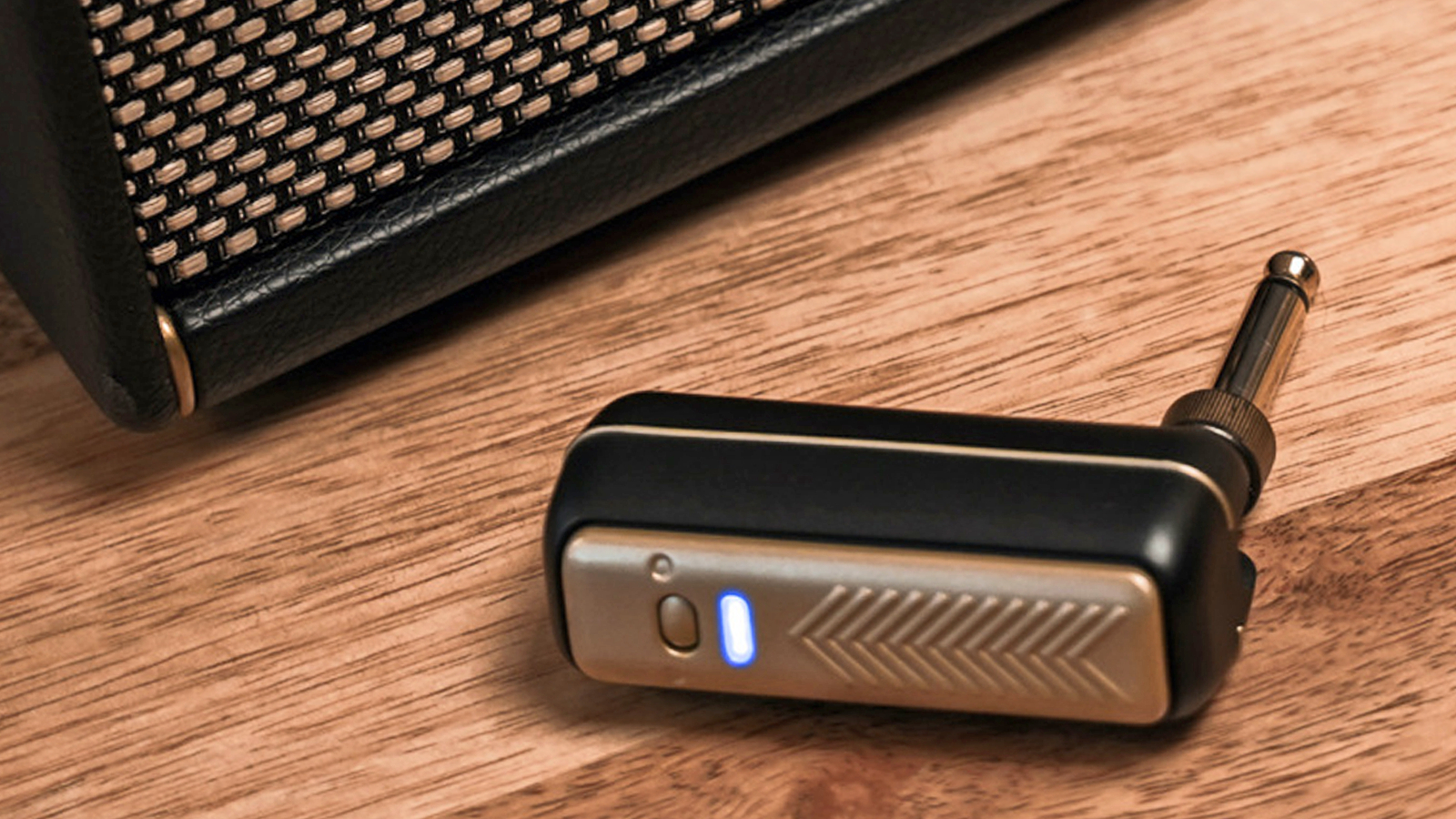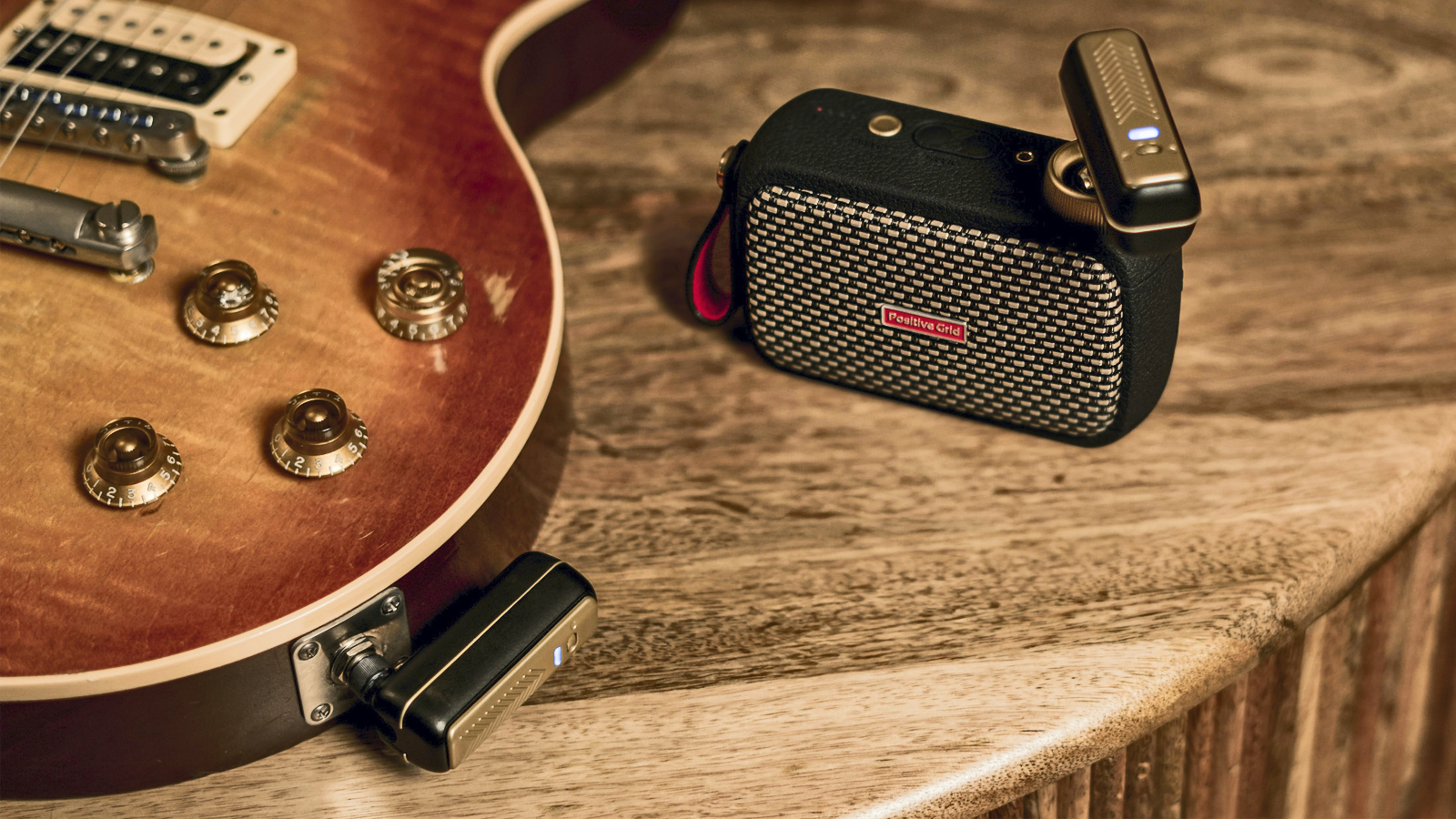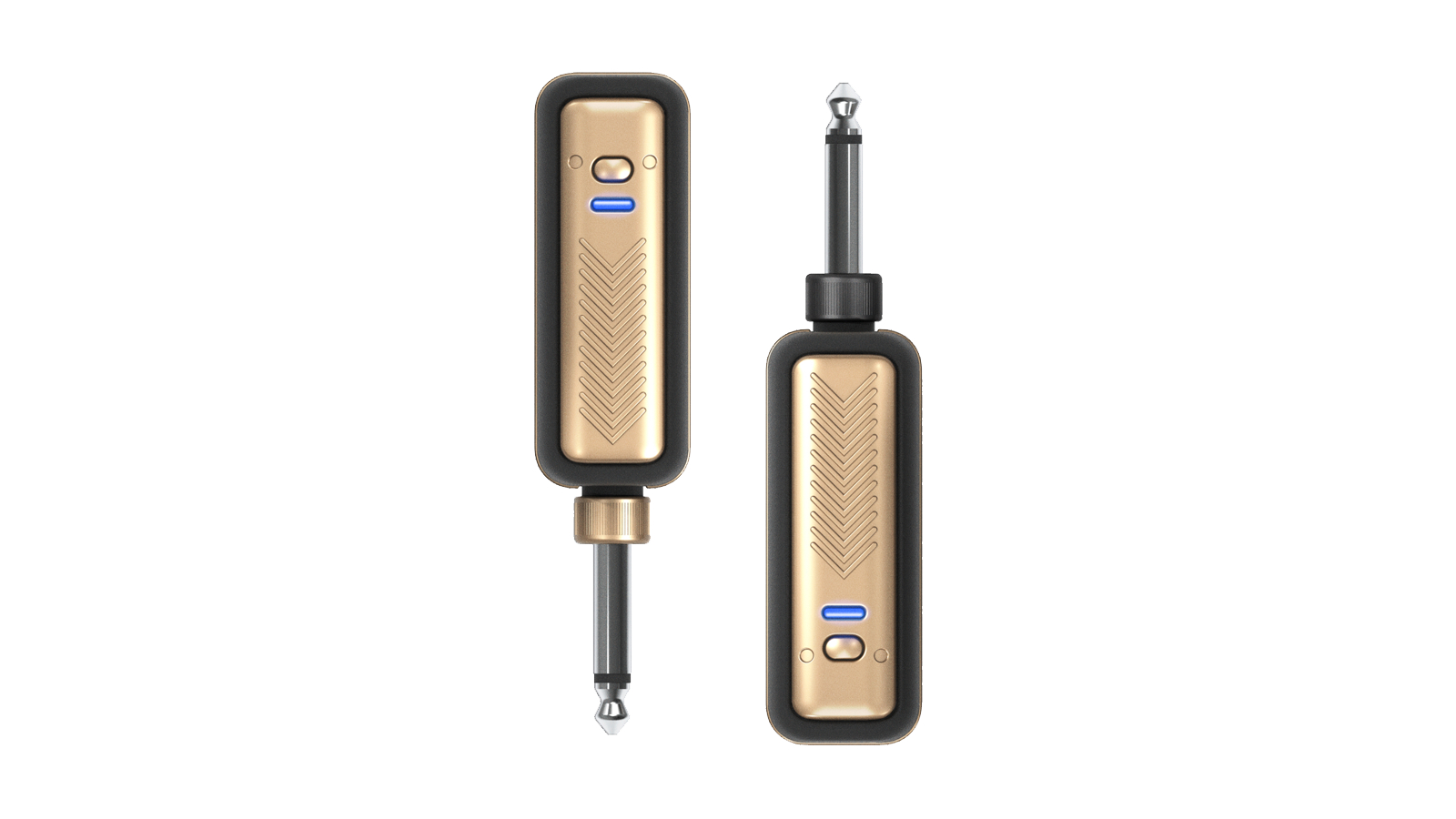
Range: 70 feet (21 meters)
Battery: Up to 6 hours
Audio Quality: 24-bit/48kHz
Frequency Range: 20Hz to 20kHz
Latency: Less than 3ms
Buy at Positive Grid
Are you tired of being shackled to your amplifier by your guitar cable? Well, Positive Grid's latest release may be just what you are looking for – introducing the Spark LINK. With the recent launch of the CAB, LIVE and now the new LINK, Positive Grid is clearly branching out, proving that their celebrated Spark line isn't just for home use – they can take to the stage too.
Boasting reliable 2.4G wireless transmission over 70 feet, 24-bit/48kHz audio quality, an impressive frequency range of 20Hz to 20kHz, and a competitive price tag, this may be the ultimate wireless solution for home practice, rehearsals, and the stage.
This state-of-the-art wireless guitar system is designed to work equally well with guitar or bass and any amplifier, and with four channels available, your entire band can use the Spark LINK simultaneously without experiencing any interference.
Rounding out the spec list is a built-in rechargeable battery, which provides up to 6 hours of operation on a single charge.

Opening the box we were greeted with two sleek-looking "bug-style" units – one a transmitter and the other a receiver – dressed in a stylish gold and black finish. This color combo has become a trademark of the Spark line, so we are glad to see it continue to the accessories, too.
At first glance, these two units look to be identical, but on closer inspection, you can tell which is the receiver and which is the transmitter by the color of the jack – gold is the transmitter, which goes into your electric guitar and black is the receiver which plugs directly into your amp.
As you'd expect, the build quality here is top-notch. The units feel perfectly sturdy and robust with the 110° hinge feeling reliable and reassuringly stiff – we are confident that the LINK will stand up to the stress of the road, no problem at all.
It was a breeze to set up, too. Simply switch them on, plug them in and away you go. If you are in a band and there are multiple LINKs in the room, you can switch the channels to ensure there is no interference. This is done by pressing the discrete button on each of the units – the color of the LED will change to indicate which channel you are using.

In terms of audio quality, we didn't hear any difference between the LINK and a standard guitar cable. To our ears, there was no loss of high-end frequencies – which can sometimes happen with wireless units – and our signal was just as strong as it was when using our favorite Ernie Ball cable.
The range was pretty great, too. Positive Grid states that the LINK has a coverage of 70 feet (21 meters), which is more than enough for most live scenarios and practicing at home. To push the LINK to its limits, we decided to try placing the amp in our living room and our guitar upstairs in our home office. To our surprise, the LINK didn't cut out once – even through two closed doors. So we were very impressed with this wireless unit's performance.
Now, if there was one negative thing we can say about Positive Grid's latest product, it's that it doesn't look particularly good on guitars with front facing jacks. While the units look totally fine on our Les Paul, Telecaster, and Explorer, it's pretty unsightly on our ES-335, SG, and Strat. We are aware that this is a common complaint with bug-style wireless units, but as the body of the LINK is pretty long, for us, the way it sits on these guitars is enough to put us off using it with certain models.
Specifications

- Range: 70 feet (21 meters)
- Battery: Up to 6 hours
- Audio Quality: 24-bit/48kHz
- Frequency Range: 20Hz to 20kHz
- Latency: Less than 3ms
- Contact: Positive Grid







